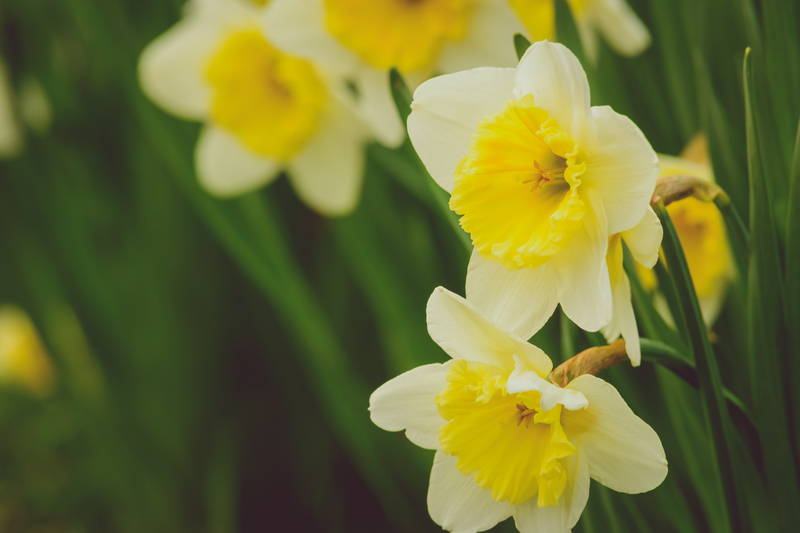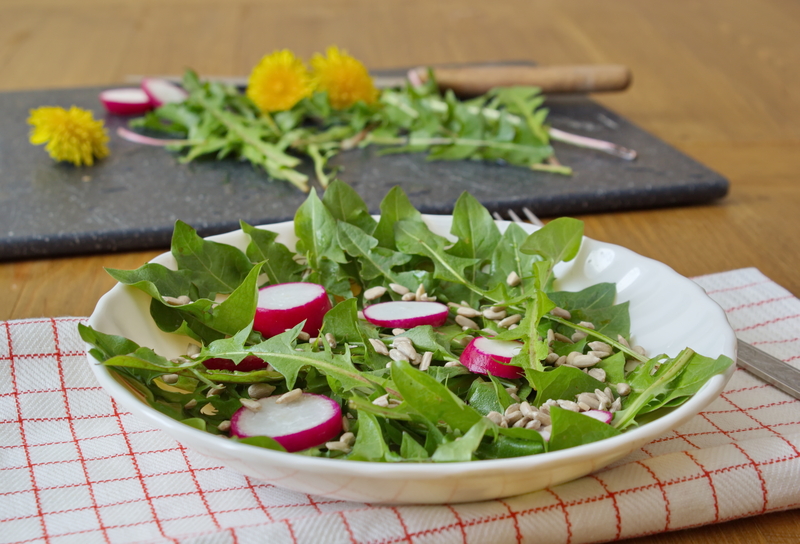Top Garden Tools Every Passionate Gardener Should Own
Posted on 18/06/2025
Top Garden Tools Every Passionate Gardener Should Own
Gardening is more than just a relaxing hobby; it's a craft that combines creativity, patience, and a strong connection to nature. Whether you tend to a blooming flower bed, cultivate a productive vegetable patch, or simply enhance your backyard's aesthetic, having the right garden tools is essential for both enjoyment and success.
This comprehensive guide explores the must-have garden tools for passionate gardeners, including the best options for various gardening styles, tips for choosing quality equipment, and advice on tool care and maintenance. If you're eager to get your hands dirty and see thriving results, read on to discover the top tools that every gardener should own.

1. Essential Hand Tools for Every Gardener
Hand tools are a gardener's best friend for day-to-day tasks. Versatile, easy to maneuver, and perfect for precision work, these are the key hand tools that belong in every garden shed.
Garden Trowel
The garden trowel is perhaps the most fundamental tool for planting, transplanting, and digging small holes. Look for a sturdy, rust-resistant trowel with an ergonomic handle. Stainless steel trowels offer durability and resist corrosion.
- Use: Planting seedlings, scooping soil, weeding, and container gardening.
- Tip: Choose a trowel with depth markings on the blade for consistency when planting bulbs or seeds.
Hand Fork (Cultivator)
A hand cultivator or fork is invaluable for loosening soil, aerating beds, and removing weeds. Its prongs make breaking up compacted dirt much easier, aiding in healthier root growth.
- Use: Soil aeration, mixing amendments, and weed removal.
- Tip: Opt for a wide, sturdy handle for comfortable, prolonged use.
Pruning Shears (Secateurs)
Pruning shears, also called secateurs, make effortless work of trimming small branches, deadheading flowers, and harvesting fruits or vegetables. There are two main types: bypass pruners for live plants and anvil pruners for dried or dead stems.
- Use: Cutting back branches, shaping plants, and encouraging fresh growth.
- Tip: Keep blades sharp and clean to reduce plant disease transmission.
Hand Weeder
Pesky weeds can sabotage even the most beautiful gardens. A hand weeder helps you dig up weeds at the root, preventing regrowth. Look for models with a forked tip and a comfortable grip.
- Use: Precise removal of dandelions, thistles, and other deep-rooted weeds.
- Tip: Choose a stainless steel or carbon steel blade for longevity.
2. Essential Long-Handled Garden Tools
While hand tools are essential for detail work, long-handled tools simplify heavy labor and protect your back. Here's what every passionate gardener should keep on hand:
Spade
The classic garden spade is a necessity for digging, edging, and dividing perennials. A sharp, flat blade allows for straight cuts in soil and turf.
- Use: Digging trenches, edging beds, and slicing through root systems.
- Tip: Choose a spade with a reinforced shaft and a wide, comfortable handle.
Garden Fork
A garden fork is indispensable for turning soil, breaking up clods, and incorporating organic matter. It's also excellent for lifting root vegetables such as potatoes and carrots.
- Use: Soil turning, compost mixing, and root harvesting.
- Tip: Ensure the tines are strong enough to handle compact or rocky soils.
Hoe
The hoe comes in various styles, including draw hoes and stirrup hoes. It's used for cultivating soil and tackling surface weeds, making it a must-have for vegetable gardens and flower beds alike.
- Use: Weeding, breaking up soil, and creating planting furrows.
- Tip: Select a hoe with a sharp edge and adjustable length for comfort and precision.
Rake
No garden tool collection is complete without a robust rake. A soil rake (with rigid metal tines) levels earth, spreads mulch, and removes debris, while a leaf rake (with flexible tines) makes gathering leaves and grass clippings easy.
- Use: Smoothing soil, clearing leaves, and preparing seedbeds.
- Tip: Lightweight aluminum or steel rakes combine durability with ease of use.
3. Watering and Irrigation Tools
Proper hydration is fundamental to plant health. The right watering tools make it simple to provide consistent moisture without wasting water.
Garden Hose and Nozzle
A high-quality garden hose paired with an adjustable nozzle is invaluable for versatile watering. Choose hoses that are kink-resistant, made of durable materials, and long enough for your garden's reach.
- Use: Watering garden beds, containers, and lawns.
- Tip: An adjustable nozzle lets you switch between light misting and powerful jets for different plants and tasks.
Watering Can
For delicate seedlings, container plants, or areas a hose can't reach, a watering can is irreplaceable. Look for a balanced design with a removable rose spout for gentle distribution.
- Use: Precise watering in pots and beds, compost tea application.
- Tip: Galvanized steel cans are durable, but plastic models are lightweight and affordable.
Soaker Hoses and Drip Irrigation
For larger gardens, soaker hoses and drip irrigation systems offer efficient, water-saving solutions. These systems deliver moisture directly to plant roots, reducing evaporation and weed growth.
- Use: Automated or low-maintenance garden watering.
- Tip: Set timers to optimize watering schedules and reduce water waste.
4. Tools for Pruning and Cutting
Healthy, well-shaped plants require regular pruning and trimming. Having the right cutting and pruning tools makes all the difference for both plant health and garden aesthetics.
Loppers
Loppers have long handles for greater leverage, making them perfect for cutting thick branches up to 2 inches in diameter. Bypass loppers are best for live wood, while anvil loppers handle dead branches effectively.
- Use: Pruning trees and large shrubs, rejuvenating overgrown specimens.
- Tip: Lightweight, cushioned handles reduce fatigue during longer pruning sessions.
Pruning Saw
A pruning saw features sharp, jagged edges for working through tough branches that are too big for loppers or hand pruners. Folding models offer easy storage and are safer to transport.
- Use: Removing larger woody stems, shaping mature trees and shrubs.
- Tip: Keep saw teeth clean and lubricated for efficient, safe cutting.
5. Soil Testing and Measuring Tools
Healthy soil is the foundation for a thriving garden. Modern gardening tools include a range of devices for checking soil conditions and tailoring care accordingly.
Soil Tester Kit
A soil tester kit helps determine pH levels, nutrient content, and moisture. Knowing your soil type saves time and money and helps you choose the right plants or amendments.
- Use: Field testing soil prior to planting or fertilizing.
- Tip: Digital meters provide quick, accurate readings, simplifying soil analysis for beginners.
Measuring Tape or Garden Ruler
Accurate spacing is crucial for healthy plants and tidy garden layouts. A measuring tape or a dedicated garden ruler makes planning beds and placing plants quick and precise.
- Use: Laying out rows, spacing seeds, and marking planting depths.
- Tip: Waterproof models endure damp conditions and regular use.
6. Tools for Composting and Garden Cleanup
Keeping your garden tidy and productive means regular maintenance. These tools help manage garden waste and make composting easier, turning debris into valuable fertilizer.
Wheelbarrow or Garden Cart
A reliable wheelbarrow or garden cart is essential for heavy lifting. Whether transporting soil, mulch, plants, or debris, these tools reduce the strain on your body and speed up cleanup.
- Use: Moving loads, mixing compost, and collecting yard waste.
- Tip: Pneumatic tires and balanced designs handle rough terrain smoothly.
Garden Gloves
Although not a tool in the traditional sense, high-quality garden gloves are indispensable. They protect your hands from thorns, blisters, and chemicals while improving grip and dexterity.
- Use: All gardening tasks--especially pruning, digging, and weeding.
- Tip: Choose gloves with reinforced fingertips and breathable material for comfort.
Compost Bin or Tumbler
Advanced gardeners know the power of composting. A compost bin or tumbler simplifies the process of turning kitchen scraps and yard waste into nutrient-rich compost for your plants.
- Use: Composting leaves, clippings, fruit peels, and garden debris.
- Tip: Closed tumblers deter pests and speed up decomposition.
7. Specialized and Advanced Gardening Tools
Once you've mastered the basics, you may consider adding specialized garden equipment for more advanced or large-scale gardening tasks.
Edging Tools
A clean edge between lawn and flowerbed elevates your garden's look. Specialized edging tools or half-moon edgers create crisp lines and make ongoing maintenance easier.
Garden Kneeler or Seat
Prolonged tasks can be tough on knees and joints. A garden kneeler or portable seat offers comfort and protection so you can focus on your planting, not your aches.
Seed Spreader
For larger plots or lawns, a seed spreader ensures even distribution of grass seed or fertilizer, resulting in a uniform, lush landscape.
Tips for Choosing Quality Gardening Tools
With so many choices on the market, selecting the right garden gear can be overwhelming. Keep these tips in mind for long-lasting, effective tools:
- Material Matters: Stainless steel blades and solid wood or fiberglass handles offer durability and weather resistance.
- Comfort Counts: Ergonomic handles, cushioned grips, and balanced designs reduce fatigue and increase efficiency.
- Fit for the Job: Match the tool to your gardening style--smaller tools for containers, larger ones for big plots, and specialized tools for unique tasks.
- Easy Maintenance: Choose tools with replaceable parts, easy-to-clean surfaces, and minimal moving components for reliability.

Caring for Your Garden Tools
To get the most from your gardening essentials, regular care and maintenance are crucial. Follow these practices to keep your tools in peak condition:
- Clean After Use: Remove dirt and sap to prevent rust and extend the lifespan of your tools.
- Sharpen Blades: Keep cutting tools sharp for quick, clean cuts--this is better for both you and your plants.
- Store Properly: Hang tools or store them in a dry, protected area to avoid moisture damage.
- Inspect for Damage: Regularly check for loose handles, cracked blades, or worn-out parts and repair as necessary.
Conclusion: Equip Your Garden for Success
Creating a lush, productive, and beautiful garden is within reach for every enthusiast--with the right garden tools. By investing in quality essentials, maintaining them well, and selecting the best tools for your unique garden and needs, you'll set the stage for seasons of enjoyment and bountiful harvests.
Whether you're a seasoned horticulturist or just beginning your green-fingered journey, this list of top gardening tools is your ticket to gardening success. Equip your shed, dig deep, and watch as your garden thrives like never before!

